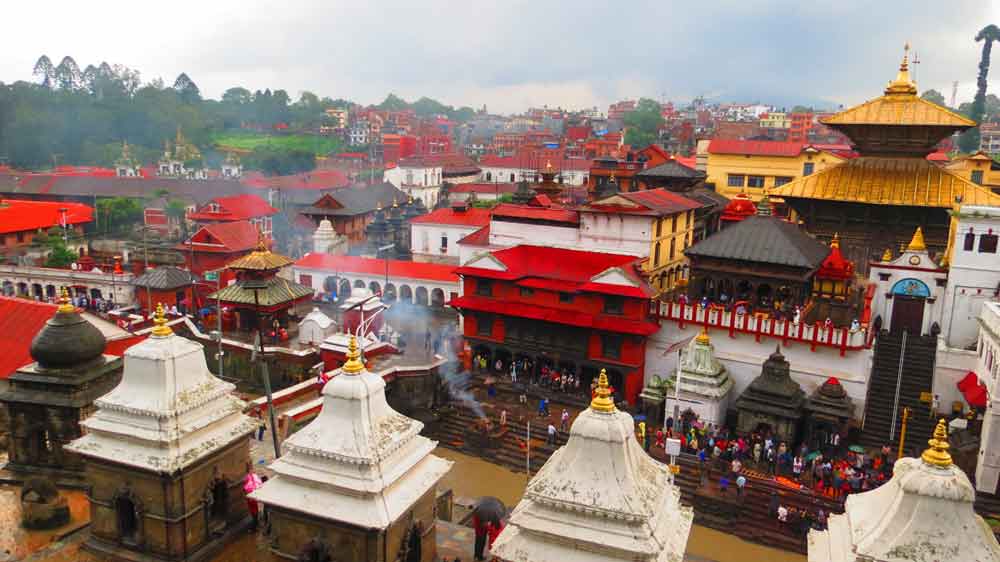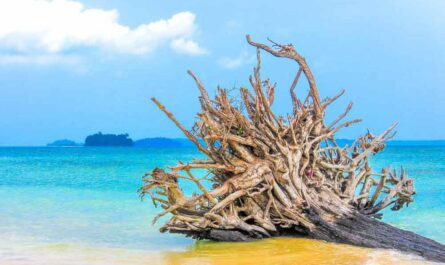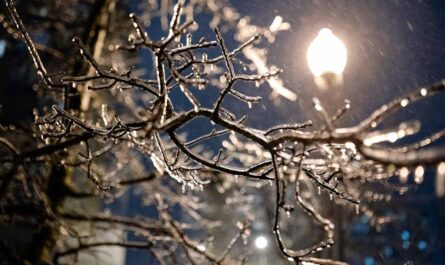As you delve deeper into the details that adorn Pashupatinath Temple, a tapestry of superb intricacies unfolds before your eyes. Each architectural element, from the ornate carvings to the towering spires, weaves a narrative of craftsmanship and devotion. The sacred ambiance within the temple complex resonates with the echoes of centuries-old prayers, creating an immersive experience that transcends time. The spiritual and aesthetic nuances interwoven into every nook and cranny make this temple an awe-inspiring destination.
Pashupatinath Temple, Nepal Interesting, Fun Facts
Nestled in the heart of the picturesque Kathmandu valley, the Pashupatinath Temple stands as an enduring symbol of cultural and spiritual richness. Recognized as a UNESCO World Heritage Site, this architectural marvel boasts a history that spans centuries, weaving together the tapestry of Nepal’s religious heritage. The temple’s significance transcends mere antiquity, as it represents a cultural jewel intricately linked to the identity of the Kathmandu valley. Let’s find some interesting information about Kathmandu Pashupatinath Temple:
1. Pashupatinath Temple: A Sacred Marvel on the Banks of Bagmati River
Nestled gracefully on the western bank of the Bagmati River, merely 500 meters west of Kathmandu Airport, the Pashupatinath Temple stands as an architectural and spiritual marvel, dedicated to the veneration of Lord Shiva. This hallowed site holds paramount significance among Hindus globally, epitomizing sanctity and reverence.
2. Architectural Splendor: A Pagoda-style Marvel from the Fifth Century
The temple, a towering edifice rising 23.6 meters above its single plinth, showcases an exquisite pagoda-style design dating back to the fifth century. Its grandeur is accentuated by the presence of two resplendent gold-plated roofs, four intricately adorned tympanums, a bell-shaped pinnacle, a regal golden bull sculpted in 1890, a symbolic Trident, and statuesque representations of various deities. The edifice proudly features four silver-plated doorways, each pointing in one of the cardinal directions, welcoming devotees from all corners of the Earth.
3. The Sanctum: A Sacred Abode of Lord Shiva’s Linga
At the heart of the temple’s spiritual energy lies its sanctum, where a one-meter-long, four-faced phallic image of Lord Shiva, known as the Linga, is enshrined. This revered symbol serves as a tangible representation of the divine, eloquently conveying the title “Lord of the Beast.” The Linga holds profound cultural and religious significance, inviting pilgrims and seekers to experience a connection with the divine through ritualistic worship and contemplation.
4. A Gateway to the Sacred: Exploring the Heritage Complex
Visitors seeking to immerse themselves in the spiritual ambiance of Pashupatinath Temple are required to pay a nominal entrance fee. For foreign visitors, this fee amounts to 1000 Rupees, excluding Indian Nationals. The heritage complex not only offers a glimpse into the rich cultural tapestry of Hinduism but also serves as a testimony to the enduring allure of this sacred site. Each step within the temple grounds unfolds layers of history, tradition, and devotion, making it a quintessential pilgrimage for the faithful and an architectural gem for enthusiasts of ancient craftsmanship.
5. Cultural Reverence and UNESCO Heritage Status
In the annals of cultural heritage, Pashupatinath Temple secured its esteemed position, earning the prestigious UNESCO World Heritage designation in 1979. This architectural marvel has deep-rooted origins, with the temple priest, known as Mul Bhatta, tracing his lineage back to South India during the 16th century. The grandeur of the temple unfolds on specific occasions – every Monday, an ode to Lord Shiva, annual festivals, the ethereal glow of full moon days, the sacred Ashtami, the contemplative Saturdays, and the transformative Mondays of Shrawan (July-August), drawing crowds in fervent devotion.
6. Pashupatinath and Guheswari: A Sacred Haven for Hindus
Nestled along the banks of the Bagmati River, Pashupatinath and Guheswari temples stand as exclusive sanctuaries accessible only to devout Hindus. The roots of Guheswari trace back to the 17th century when it gained prominence as a revered Shakti Pith. This transformation occurred following the mystical event of the falling Yoni of Goddess Parvati during Shiva’s cosmic journey after her demise. Positioned near the deer park, known as Mrigsthali, these sacred sites are a testament to the spiritual richness that envelopes the Kathmandu Valley.
7. Strict Customs and Divine Atmosphere
Entering the precincts of Pashupatinath and Guheswari comes with a set of strict customs. A prohibition on cameras, footwear, and leather-based items is rigorously enforced within the temple grounds. To accommodate the needs of the visitors, the temple offers amenities such as a footwear stand, locker facilities, bathrooms, and water taps. The eastern Sleshmantak forest hill unfolds a breathtaking panorama, providing a vantage point to witness temple activities, cremations, and the flowing Bagmati River.
8. Resilience Amidst Catastrophe: The Earthquake Test
The tempest of April 27, marked by a powerful earthquake that reverberated through Nepal, wreaked havoc on the nation’s structures and UNESCO heritage sites. In the midst of this chaos, the Pashupatinath Temple stood tall, resisting the destructive forces that sought to crumble its ancient walls. Miraculously, with only a few cracks marring its facade, the temple emerged as a symbol of resilience amidst the debris. Adherents hailed it as a divine intervention, attributing the survival to celestial forces, while skeptics argued that the robust foundation and architectural prowess were the true guardians against the earthquake’s ravages.
9. Architectural Marvel of Pashupatinath Temple
Nestled on the picturesque west bank of the meandering Bagmati River, the Pashupatinath Temple stands as a testament to the exquisite grandeur of Hindu architecture. This sacred edifice, revered as a sacrificial masterpiece, enchants visitors with its majestic allure. The main temple structure, characterized by its enclosed ceilings and resplendent gold spires, evokes a sense of divine reverence that transcends mere physical presence.
10. Intricate Design and Ornate Detailing
The temple, with its distinctive thick shape, beckons pilgrims and enthusiasts alike to explore its ornate magnificence. Silver-clad doors, four in number, guard the sanctity within, each a testament to meticulous craftsmanship. The two-story roof, a masterpiece in itself, boasts the richness of pure copper, adorned with a regal veneer of glistening gold. This harmonious fusion of metals creates an ethereal ambiance that elevates the spiritual experience of all who enter.
11. Shiny Shivling and the Golden Nandi
At the heart of Pashupatinath’s allure lies the captivating brilliance of the Shivling and the majestic gold statue of Nandi, Shiva’s sacred bull. The Shivling, a unique manifestation within this temple, commands attention with its four-faced structure. This unusual configuration imparts a profound symbolism to the lingam, with each face directed towards a cardinal point. The faces bear distinctive names—Tatapurush in the east, Samvata in the west, Bamdev in the north, and Aghora in the south—each contributing to the enigmatic aura surrounding the sacred shrine.
12. The Unique Four-Faced Lingam
A distinctive feature that sets Pashupatinath apart is the presence of a four-faced lingam, a rarity among Hindu temples. The uniqueness lies in the faces, each oriented in a different direction and endowed with a name. The ritual significance attached to these faces further deepens the spiritual journey for devotees. Noteworthy among these is the uppermost part of the lingam, known as Han Shan, adding yet another layer of mystique to the already profound symbolism embodied by this architectural masterpiece.

13. Pashupatinath Temple: A Timeless Legacy
Nestled in the folds of history, the Pashupatinath Temple boasts an age that transcends the imagination of contemporary minds. While you may not easily fathom the antiquity of this sacred edifice, it’s a revelation that this architectural marvel has graced the spiritual landscape since the year 400 AD. The mere mention of such a time span leaves one utterly speechless, underscoring the profound historical significance embedded in the very stones and structures of this venerable temple.
14. The Enigmatic Legend Unearthed
Behind the stoic walls and intricate sculptures lies an enchanting legend that lends an aura of mystique to the genesis of the Pashupatinath Temple. The narrative unfolds with a tale of a cow, a humble creature whose daily ritual of supplying milk unfolded at the very spot where this temple now stands. Delving into the earth beneath, archaeologists and devotees alike were astonished to unearth a Shivlinga, the sacred symbol of Lord Shiva. Thus, the temple’s origin is steeped in the mystical connection between the divine and the mundane, weaving a tapestry of wonder that captivates the heart and soul. How AI, ChatGPT maximizes earnings of many people in minutes
15. Riverside Majesty: Pashupatinath’s Idyllic Location
Serenely gracing the banks of the meandering Bagmati River, the Pashupatinath Temple is a sublime testament to the confluence of spirituality and nature’s grandeur. Positioned on the Western bank of the river, it stands as a beacon of reverence, considered among the finest Shiva temples globally. The architectural brilliance of this masterpiece becomes evident as one marvels at its bunk roof and an exquisite golden spire, reaching towards the heavens. This sacred sanctuary is not merely a structure but an artistic symphony, harmonizing with the natural beauty that envelopes its hallowed grounds.
16. Architectural Grandeur: A Feast for the Senses
Every facet of the Pashupatinath Temple is a feast for the senses, a visual and spiritual delight that transcends the ordinary. The cubic construction, an embodiment of precision and craftsmanship, stands as a testament to the architectural prowess of its creators. The main doors, adorned with silver intricacies, beckon visitors into a realm where divinity and artistry converge. As sunlight dances upon the sacred Shivlinga within, it radiates a mesmerizing glow, visible from afar. The colossal Nandi, stationed at the entrance, stands as a formidable guardian, a symbol of unwavering devotion and strength that welcomes pilgrims into the sacred embrace of Pashupatinath. Motivation – Mind – Success – Thinking – Productivity – Happiness
17. Sacred Access and Artistic Marvels
The hallowed grounds of the Pashupatinath Temple, nestled in the heart of Nepal, present an intriguing dichotomy to its visitors. A testament to its exclusivity, the primary sanctum of the temple is a sanctuary solely accessible to adherents of the Hindu faith. This exclusiveness, where the profound spirituality of Hinduism converges, forms one of the pivotal Pashupatinath Temple facts that mark its spiritual identity.
Amidst the sacred precincts, the temple unfolds a captivating tapestry of artistic brilliance. Unique paintings and sculptures adorn the diverse sections, each a silent testimony to the rich heritage and intricate craftsmanship. On either side of the temple’s doors, a pantheon of gods and goddesses emerges, their golden effigies casting an ethereal glow. A captivating opulence emanates from these gilded depictions, serving as a visual feast for those who traverse the spiritual labyrinth within the hallowed edifice. Business – Money Making – Marketing – E-commerce
The roof, a testament to both architectural finesse and cultural expression, is supported by a symphony of sculpted beads. Each bead, a microcosm of artistry, narrates tales through intricate depictions of diverse sexual poses. This nuanced detailing adds a layer of complexity to the temple, transcending the boundaries of conventional religious structures and beckoning exploration into the realms of symbolism and expression.
18. Pashupatinath Aarati: An Enchanting Night Ritual by the Bagmati River
Nestled on the banks of the Bagmati River, the Pashupatinath Aarati unfolds as a mesmerizing night ritual, a spectacle of devotion and spirituality that captivates the senses. This sacred ceremony commences daily at the Pashupatinath Temple, dedicated to Lord Shiva, Goddess Parvati, and the flowing waters of the Bagmati River. The ritual unfolds its ethereal beauty against the backdrop of the setting sun, commencing at 6 pm in the winter and 7 pm in the summer, enveloping the spectators in a celestial ambiance. Health books, guides, exercises, habits, Diets, and more
19. Timeless Traditions: A Ritual Since 2000 AD
Rooted in tradition, the Pashupatinath Aarati has graced the sacred grounds since the turn of the millennium, tracing its origins back to the year 2000 AD. This nightly spectacle, a tapestry of devotion and cultural significance, has been a source of spiritual solace for over two decades. The rhythmic beats of tradition echo through time as the monks partake in this timeless ceremony, connecting the contemporary world with the ancient rituals of Vedic heritage.
20. A Symphony of Devotion: Vedic Mantras and Ritualistic Splendor
The air becomes infused with sacred vibrations as the temple monks embark on their nightly journey of devotion. Chanting Vedic mantras, hymns, and classical melodies, the ritual unfolds like a divine symphony. The atmosphere is charged with spiritual energy, heightened by the resonating tones of ringing bells and the heady fragrance of burning incense. Amidst this ritualistic splendor, 54 small oil lamps, known as ‘Diyos,’ are meticulously lit, casting a warm glow upon the sacred surroundings. Fitness – Meditation – Diet – Weight Loss – Healthy Living – Yoga
21. Illuminating Gestures: The Ritual Dance of Light
As the night deepens, the monks engage in a choreography of illumination, dipping the flames of the lamps four times to the river below. This symbolic act, repeated with reverence, signifies a connection between the earthly realm and the divine. A sacred dance of light unfolds as the monks circle seven times around the temple, an intricate pattern of devotion and symbolism that transcends the mundane. Each gesture, deliberate and profound, adds layers of spiritual depth to the Pashupatinath Aarati. Read the 50-interesting-facts-about-new-Mexico.
22. Bhajans and Tandav Dance: Resonating Devotion
The ritual crescendos with soul-stirring bhajans, devotional songs that echo through the night air. Accompanied by the Tandav dance, a form of ecstatic expression, the Aarati becomes a visual and auditory feast of devotion. Sadhus, devout ascetics, partake in this celestial dance, paying homage to God Pashupatinath through their rhythmic movements. This divine communion, a union of music, dance, and spirituality, elevates the Aarati to a transcendent experience. RPM 3.0 – 60% CONVERSION & Money for Affiliate Marketing
23. A Gathering of Devotees: Saturdays, Mondays, and Festivals
The Pashupatinath Aarati becomes a communal expression of faith on specific days, fostering a sense of unity among devotees. Saturdays and Mondays witness a surge of participants, drawn by the magnetic allure of the ritual. Festivals, including the grand celebrations of Maha Shivaratri and Haritalika Teej, transform the riverbank into a tapestry of colors and devotion. The confluence of diverse souls, united in reverence, amplifies the significance of this sacred spectacle, making it a cherished tradition in the hearts of the faithful.
24. Things before you go to
- Everyday temple opens (West Gate) from four am to 2 pm and 5 pm to 7 pm.
- The evening temple opens at 5 pm and closed at 7 pm (Eight pm in Summer). Travel essentials, accessories, kit & items on Amazon
- Bathed and adjusted garments to Lord Shiva at 8:30 am, meals provided at 9:30 am, devotees welcome to worship at 10 am to 1:45 pm. Lunch presents to God at 1:50 pm and at 2 pm morning prayer ends (temple closed).
- Foreign vacationers (above ten years old) ought to pay 1000 Rupees for entrance.
- Aarati begins at 6 pm in Winter (7 pm in Summer) at Bagmati Riverbank.
- Free entrance for Indian nationals, go to with an ID Card.
- Do not tease a monkey and bull. Do not take a cremation picture in shut distance.
- Avoid beggers.
More Interesting Articles




